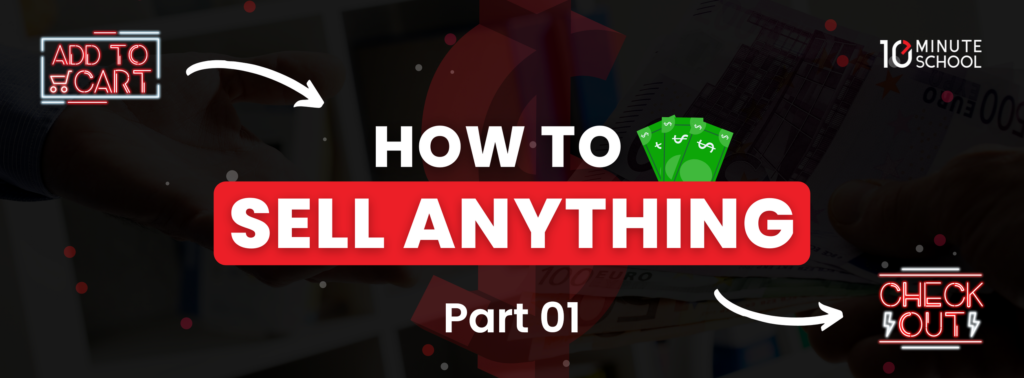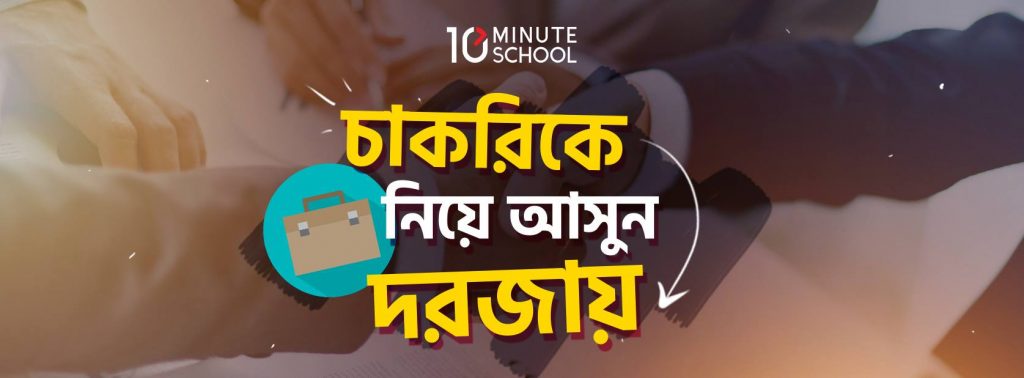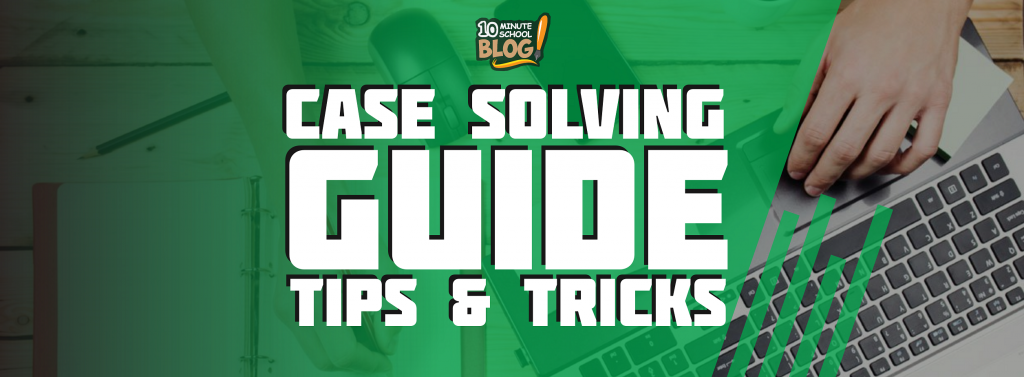In this blog series, we will dive deep into the art of selling and discuss all the nitty-gritty details and best practices associated with it, so that you too can learn how to sell anything. In the first part, we give you a brief introduction to sales and tell you everything you need to know about the sales cycle. We also give you some general guidelines which you should follow while trying to sell any product. In the second part, we will discuss how you can gradually grow your sales and also outline some industry-proven tips and tricks.
A sale is a transaction in which a buyer gets tangible or intangible products, services, or assets from the seller in exchange for money or other similar value-creating objects.
Simply said, I give you a pin in exchange for a penny. It’s a transaction in which I’m the seller and you’re the buyer.
Hence, a sale is just an exchange of an item. One gives the other something they demand in exchange for a monetary or equivalent value.
What is The Sales Cycle:
The Sales Cycle is a set of actions undertaken by salespeople or organizations in order to acquire and retain customers. Simply put, it is a structured and sequential process followed by salespeople to close deals.
Since the act of selling is not a one-way trip, experts generally establish a sales cycle in order to ensure the acquisition of further sales.
Every stage of the Sales Cycle is linked to the one before it and the one after it. It aids in the evaluation of a product’s market acceptance. If a sales cycle is lengthy and time-consuming, it will take longer to generate revenue.
কোর্সটি করে যা শিখবেন:
Communication Masterclass by Tahsan Khan
Stages of The Sales Cycle:
The stages of the sales cycle are as follows:
-
Creating a List of Prospects
This is a list of possible customers who are interested in purchasing your product. The list of prospects helps you as a seller to identify your potential customers and is a good place to begin the journey of selling any product.
Before creating the list, you should conduct a thorough market research in order to find out the demographics of your target group.
-
Contact:
After creating a list of potential leads, the next stage is to contact each person individually. Depending on the type of business, the customer, and the seller’s strengths, the means of communication can vary from phone calls and emails to formal meetings. You as a salesperson can ask the buyer for a convenient time to meet in person and set up an appointment.
Bear in mind that your main goal at this stage is to make contact and to get to know the customers better, not to pitch the product. That comes next!
-
Funnelling:
This stage of the sales cycle involves vetting and categorizing the potential customers according to their level of interest in the product and willingness to purchase. As a salesperson, this stage is crucial because it will help you identify the leads on which you should be putting more effort and really pushing your sales pitch hard.
Once they are identified, your job is to educate them about the product, assist them in making a decision, and negotiate fairly.

আরও পড়ুন: টি-শার্ট ডিজাইন কীভাবে করে? জেনে নিন ১০টি সেরা টি-শার্ট ডিজাইনিং টিপস
You may often come across buyers who are hesitant or unsure about closing the deal. In order to be able to sell your product in such a scenario, you can offer some added benefits to the buyer within your scope. If that’s not feasible, then you can put the deal on hold.
You should document the entire funnelling method with all its strengths and weaknesses in order to be able to sell better in the future.
-
Presentation and Discussion of the Product:
Once you find out where your sales efforts should be focussed on the most, you move on to the most important stage of the sales cycle: presenting your product.
Undoubtedly, this stage requires more preparation than any other stage of the cycle. While presenting, try your best to focus more on all the pros of your product, how it differentiates from what others are selling and point out the key reasons why it is indispensable for the potential buyer to close the deal.
Your entire approach during the presentation should be formal as well as friendly, which you will have to reflect through your language, appearance and mannerism.
-
Customer Query and Feedback:
In this stage, the customer has the option to ask for more information regarding the product, object to a particular point discussed during the presentation or just simply ask any questions they may have regarding the product.
In order to prepare for this stage of the sales cycle, you should create a list of all the questions your buyers may ask and conduct ample research to find out the best answers.
Once both parties are on the same page, they can move on to the next stage.
-
Closing & Negotiation:
Both parties negotiate for a better position and try to maximize their gains at this stage. Once an agreement is reached, they proceed to the transaction.
-
Obtaining Recommendations:
One of the best ways to grow your sales is to get recommendations from the people who have already bought the product from you. If your buyer is satisfied with the transaction, try to gain his/her reference to other potential buyers.
How to sell anything:
Selling something doesn’t always involve following the same set of paths. Every sale requires a salesperson to deal with different kinds of people. Hence, it is very important for you, as a salesperson, to be adaptive in order to sell better.
Some essential guidelines to follow are:
-
Adaptability
Make an effort to blend in with the surroundings and try to stay calm while making a sales pitch. Wear attires that are neither too casual nor too formal. Simply try to communicate with the buyers on their level. Pay attention to the buyer so you can make the appropriate move. This is the most difficult part, but if you can get through it, you’ll be able to gain a lot out of it.
-
Time management
If you want to make a good impression, you should always be on time. Be very careful about not wasting anyone else’s time through your actions.
-
Helping Hand
Recognize your target market. If you want to sell anything, don’t be obnoxious about it. Make an effort to assist your potential customer. Try to make everything about them. Don’t only talk about your product because it’s tedious. Discuss their issues, needs, and the type of solution they are looking for. Your attitude and language should reflect that you understand them and that you are providing a solution rather than simply selling your product or service.
-
Know the buyer
Before you contact your buyer, do some homework. If you conduct a thorough research, you will be able to identify and concentrate more on the customers you need to pay more attention to. It also makes it easier for you to connect with them because you are familiar with their needs.
-
Knowledge about your Product
Know everything there is to know about your product. It’s not as if you can sell something without having any knowledge of it. If you’re selling security stock, for example, and you don’t understand the benefits and risks, you won’t be able to sell it. Try to make your pitch straightforward and informative.
Your genuine product expertise is measured by how well you can explain it to a potential customer. Regardless of whether your shop is online or offline, try to frame your product by displaying it in a way that customers can visualize it in their lives.
-
Rapport Build up
Establish a connection. Don’t just start rambling about your product or service when you approach a potential buyer. Begin with a decent introduction, or if he/ she asks for something, inquire as to why he/ she requires it or what the occasion is. It can also be used in a B2B setting. If you’re selling outside of your region, inquire about anything connected to their neighbourhood. Because everyone is a human being, and when it comes to themselves, everyone is interested.
-
Learn your customers and their emotion
Basic research is insufficient when you want to truly get to know a person. Ask as many questions as you can think of, but make sure they aren’t boring to your buyer. Pay close attention. This will help you better understand the person and offer them the most appropriate product or service.
It is also essential to concentrate on the buyers’ emotions. Doing so will give you an upper hand since you will be able to exploit it while making your sales pitch.
-
Urgency
You may give your potential buyer the final push by establishing an urgency, once you’ve given them all the facts and completed everything.
You can either mention that there are only a handful left in stock or simply state the actual quantity of products remaining in stock. You may claim that there is a special offer that is only available for a limited time. Or you can also present your product as a promotional item for a weekend sale.
Now that you know what the sales cycle is and have a general overview of how to sell anything, it is important we share a few tips and tricks so that you can always hit your sales target. However, we will discuss them in the second part of this blog series, so you will have to stay tuned!
References:
- How to sell anything
- https://blog.hubspot.com/sales/how-to-sell-anything-to-anybody
- https://www.mtdsalestraining.com/in-house-training/direct-selling-over-telephone/how-to-sell-a-product-to-a-customer.html
- https://www.briantracy.com/blog/sales-success/how-to-sell-anything-to-anyone/
- https://www.wikihow.com/Sell-Anything-to-Anybody
- https://www.mtdsalestraining.com/in-house-training/sales-effectiveness-training/three-good-closing-questions.html
- Sales Cycle
- https://www.marketing91.com/sales-cycle/
-
আমাদের কোর্সগুলোর তালিকা:
- Communication Masterclass by Tahsan Khan
- Facebook Marketing Course by Ayman Sadik and Sadman Sadik
- ঘরে বসে Freelancing by Joyeta Banerjee
- ঘরে বসে Spoken English Course by Munzereen Shahid
- Study Smart Course by Seeam Shahid Noor





আপনার কমেন্ট লিখুন